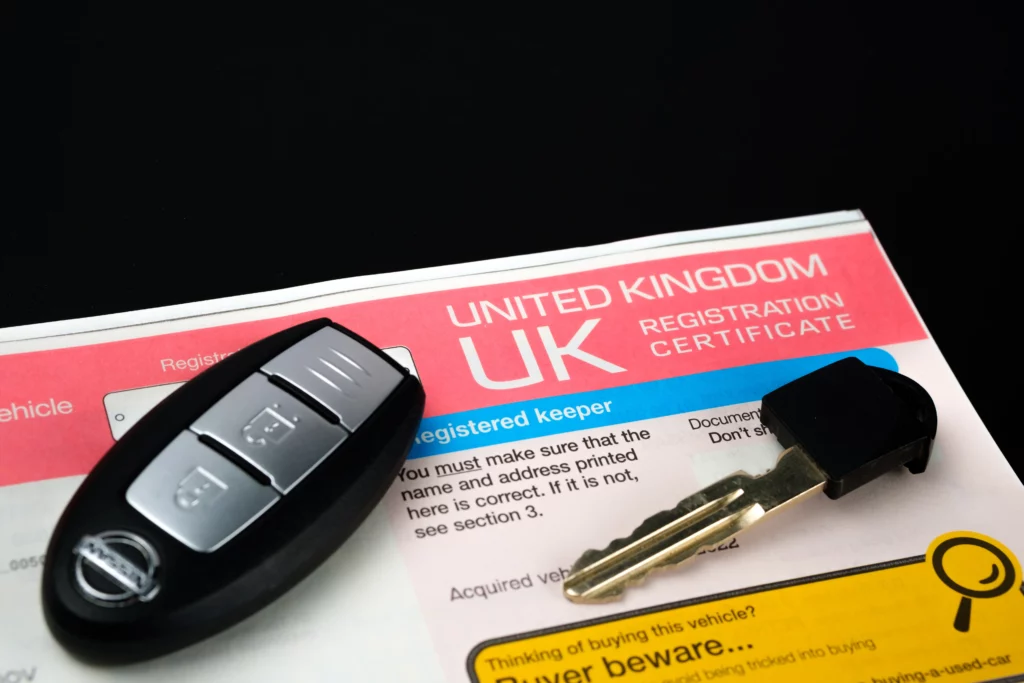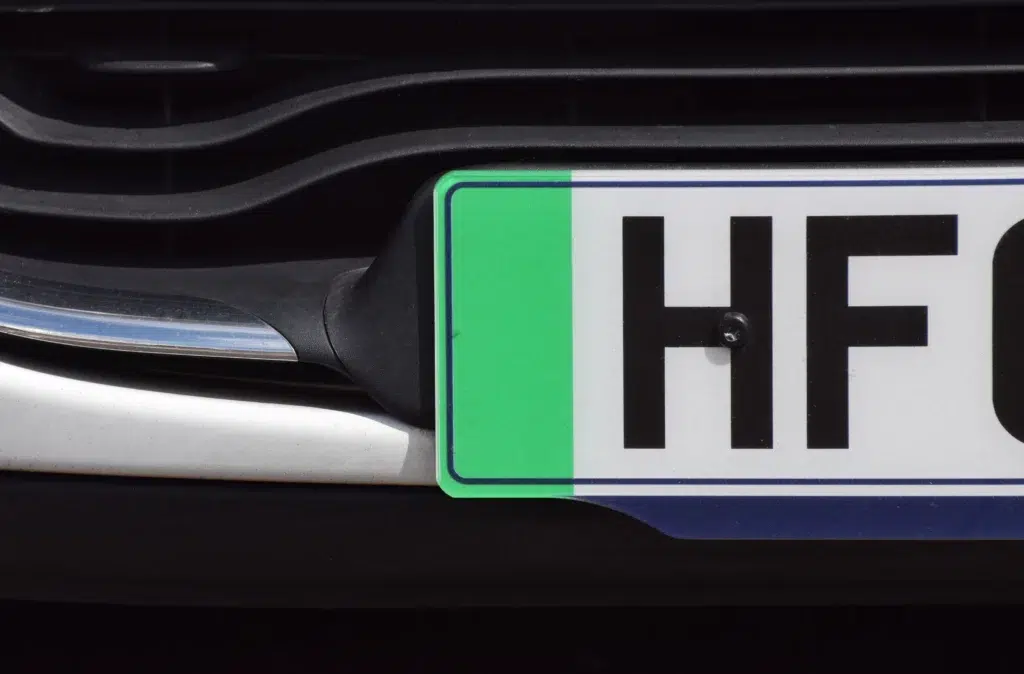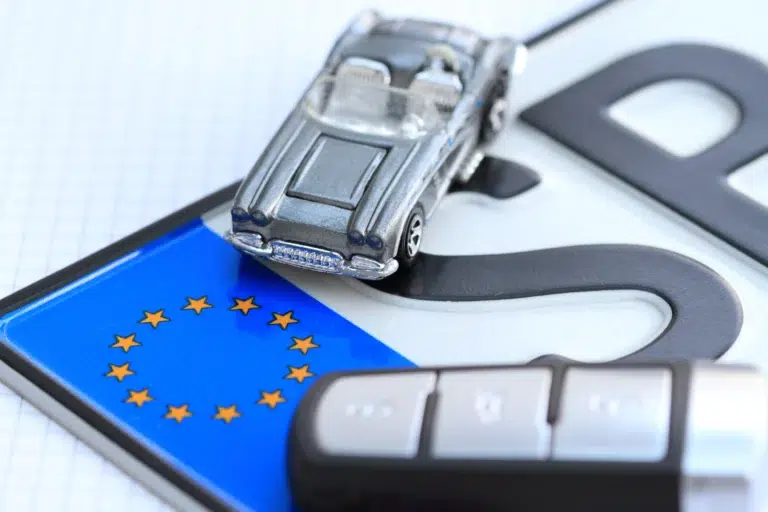This year, motor aficionados are eagerly anticipating two new number plates; the ’25’ plate, which will be introduced in March, and the ’75’ plate, will be launched in September. Learn all you need to know about UK number plates and when they change below.
- Understanding the New ’25’ and ’75’ Plates
- How do registration plates work?
- Special Types of Number Plates
- When do number plates change?
- Do car prices drop when a new reg comes out?
- How do I buy a new number plate?
Understanding the new ’25’ and ’75’ plates
This year, car enthusiasts and potential buyers are eagerly awaiting the introduction of the new ’25’ number plate on March 1, 2025, followed by the ’75’ plate on September 1, 2025. These new plates not only signify the registration period but also add a touch of novelty and prestige to new vehicles. The debut of these plates often aligns with the release of the latest car models, making March and September exciting months for the automotive industry. Owning a vehicle with the latest registration can also enhance its resale value.
How do registration plates work?
Vehicle number plates identify when and where vehicles in the UK were registered. The current format number plate was introduced in September 2001 and is made up of three parts:
- Local memory tag: The first two letters indicate the vehicle’s registration location. The first letter represents the region, and the second letter represents the DVLA local office.
- Age identifier: The middle two numbers indicate the vehicle’s age down to a six-month period (March to August or September to February). These numbers change on 1 March and 1 September. Knowing a car’s age is crucial for assessing its value and condition, especially in the used car market.
- Random letters: The last three letters are random, giving the car a unique identity.

The table below shows how the age identifier changes over the life of the current format plate. For plates issued in September, it’s the last two digits of the year plus 50.
| Year | 1 March to end August | 1 September to end February |
| 2001/02 | 51 | |
| 2002/03 | 02 | 52 |
| 2003/04 | 03 | 53 |
| 2004/05 | 04 | 54 |
| 2005/06 | 05 | 55 |
| 2006/07 | 06 | 56 |
| 2007/08 | 07 | 57 |
| 2008/09 | 08 | 58 |
| 2009/10 | 09 | 59 |
| 2010/11 | 10 | 60 |
| 2011/12 | 11 | 61 |
| 2012/13 | 12 | 62 |
| 2013/14 | 13 | 63 |
| 2014/15 | 14 | 64 |
| 2015/16 | 15 | 65 |
| 2016/17 | 16 | 66 |
| 2017/18 | 17 | 67 |
| 2018/19 | 18 | 68 |
| 2019/20 | 19 | 69 |
| 2020/21 | 20 | 70 |
| 2021/22 | 21 | 71 |
| 2022/23 | 22 | 72 |
| 2023/2024 | 23 | 73 |
| 2024/2025 | 24 | 74 |
| 2025/2026 | 25 | 75 |
Special types of number plates
In addition to the standard number plates, there are several special types of number plates available in the UK. These include:
Green number plates
Designed to identify electric vehicles that produce zero emissions. Green number plates feature a green flash on the left-hand side of the registration plate to make it easier for cars to be identified as zero-emission vehicles. Fully electric or hydrogen fuel cell cars bought from 8 December 2020 onwards come fitted with a green number plate.
This initiative aims to assist local authorities in creating and implementing new policies to encourage the ownership and use of these eco-friendly cars.

Personalised number plates
Personalised number plates are permitted in the UK, and can be bought either directly from the Driver and Vehicle Licensing Agency or from private companies. Personalised plates can represent anything from a driver’s or company’s name to a meaningful date or any other word.
If you own an unused private number, you can apply to assign it to a vehicle. There are strict rules regarding the letters and numbers on both standard and personalised plates.
You cannot use a personalised plate to make a car appear newer than it is. The plate must be from the same year the car was manufactured or older.
When do number plates change?
Car registration plates are updated twice a year; once in March (spring) and once in September (autumn). This year, the ’25’ plate will release on 1 March 2025, and the ’75’ plate will be released on 1 September 2025. March and September are also important dates for motoring enthusiasts as these months often see the introduction of the latest car models.
The Impact of Number Plate Changes on the Car Market
The release of new plates often coincides with a surge in new car purchases, as buyers seek to own vehicles with the latest registration. This biannual update not only affects the resale value of cars but also stimulates market activity and creates promotional opportunities for dealerships. By staying informed about the timing of new plate releases, consumers can make strategic decisions regarding the purchase and sale of vehicles.
Do car prices drop when a new reg comes out?
If you’re in the market for a new car and looking to save money, timing your purchase around new registration plate releases in spring and autumn can be a smart strategy. While new plates may not always reduce prices for the latest models, they can lower costs in the used car market, as dealers look to clear out older stock to make room for new arrivals.
For those looking to buy used cars, targeting vehicles older than the latest release can help secure a better deal. Personal contract purchase (PCP) is a popular finance option for newer cars, allowing buyers to pay monthly instalments and providing flexibility at the end of the contract.
By understanding the impact of new registration plate releases and exploring finance options, you can potentially lower your car purchase costs and manage monthly payments more effectively.
How do I buy a new number plate?
Purchasing number plates in the UK is a straightforward process, but it’s important to buy from registered suppliers to ensure the plates meet legal standards. You can find a list of registered suppliers on the government’s official website.
There are also numerous online vendors, but it’s crucial to verify that they are officially registered before making a purchase. This ensures that the plates you receive are compliant with all legal requirements.
For those interested in personalised number plates, these can be bought directly from the DVLA or through private companies. After purchasing a private registration, the plate must be manufactured and fitted to the vehicle according to legal specifications regarding size, font, and spacing.
Can I transfer my number plate?
If you’re look to transfer a personalised number plate to another car, the process is fairly straightforward but does require some paperwork. Registration transfers are managed by the DVLA. To be eligible for a number plate transfer, your vehicle must:
- Be registered with the DVLA.
- Have a valid MOT or HGV test certificate.
- Be taxed or have been registered as SORN continuously for the past 5 years.
- Be available for inspection if chosen by the DVLA.

There are three types of registration transfers:
Car-to-Car Transfers
This involves moving a registration plate from one vehicle to another. You will need the following:
- V5 registration forms and valid MOT certificates for both vehicles.
- Pay an £80 fee.
- Complete the V317 form, available online or for download.
- Both vehicle owners must sign the form.
- Once the DVLA have all of the above, the transfer process takes around 4-6 weeks.
Retention/Certificate to vehicle
This involves using a Certificate of Entitlement (V750) or Retention Document (V778) to replace an existing plate on a vehicle. You will need to:
- Complete the V317 form, available online or for download.
- Apply to assign a number online.
- Provide the new registration details and a copy of the V5C registration document.
- Pay an £80 fee.
- Once the DVLA have all of the above, the transfer process takes around 4-6 weeks.
Vehicle to retention
This involves removing a number plate from a vehicle for future use. You will need to:
- Apply to remove the number plate from your vehicle, by filling out the V317 ‘transfer or retain a vehicle registration number’ form, including either the vehicle’s logbook (V5C) or green ‘new keeper’ slip with a completed V62.
- Pay an £80 fee.
- You will then receive a new logbook with a new registration plate number and a V778 retention document for your number plate.
Quickfire summary
- The ’25’ number plate will be introduced on March 1, 2025, and the ’75’ plate on September 1, 2025.
- Vehicle number plates identify when and where vehicles in the UK were registered. The current format number plate was introduced in September 2001.
- Special Types of Number Plates:
- Green Plates: Identify zero-emission electric vehicles with a green stripe.
- Personalised Plates: Customizable but must meet legal rules.
- When Do Number Plates Change?
- Updated biannually—March and September. 2025 sees “25” plates in March and “75” in September.
- Impact on the Car Market: New plates boost new car purchases and affect resale values. Timing purchases around new releases can be strategic.
- Do Car Prices Drop When a New Reg Comes Out?
- New plate releases can lower used car prices. Exploring finance options can help manage costs.
- How Do I Buy a New Number Plate?
- Purchase from registered suppliers to meet legal standards. Personalised plates can be bought from the DVLA or private companies.
- Can I Transfer My Number Plate?
- The short answer is yes, although it does require some paperwork. There are three types of registration transfers: car-to-car transfers, retention/certificate to vehicle and vehicle to retention.
Read also:
- Trade plates for the motor industry: Everything you need to know
- What Does it Mean to Have a Private Number Plate on Retention?
- Your Guide to Removing a Private Number Plate
- Your Guide to Number Plate Retention
- Free MOT status checker – Check a vehicle’s MOT history
- Car Insurance Group Checker
- Car Insurance Groups [A Complete Guide]
- Car Tax Checker: check if your car is taxed
- Try our free-to-use Car Tax Checker
- Are you ready for your test? Your driving test checklist

